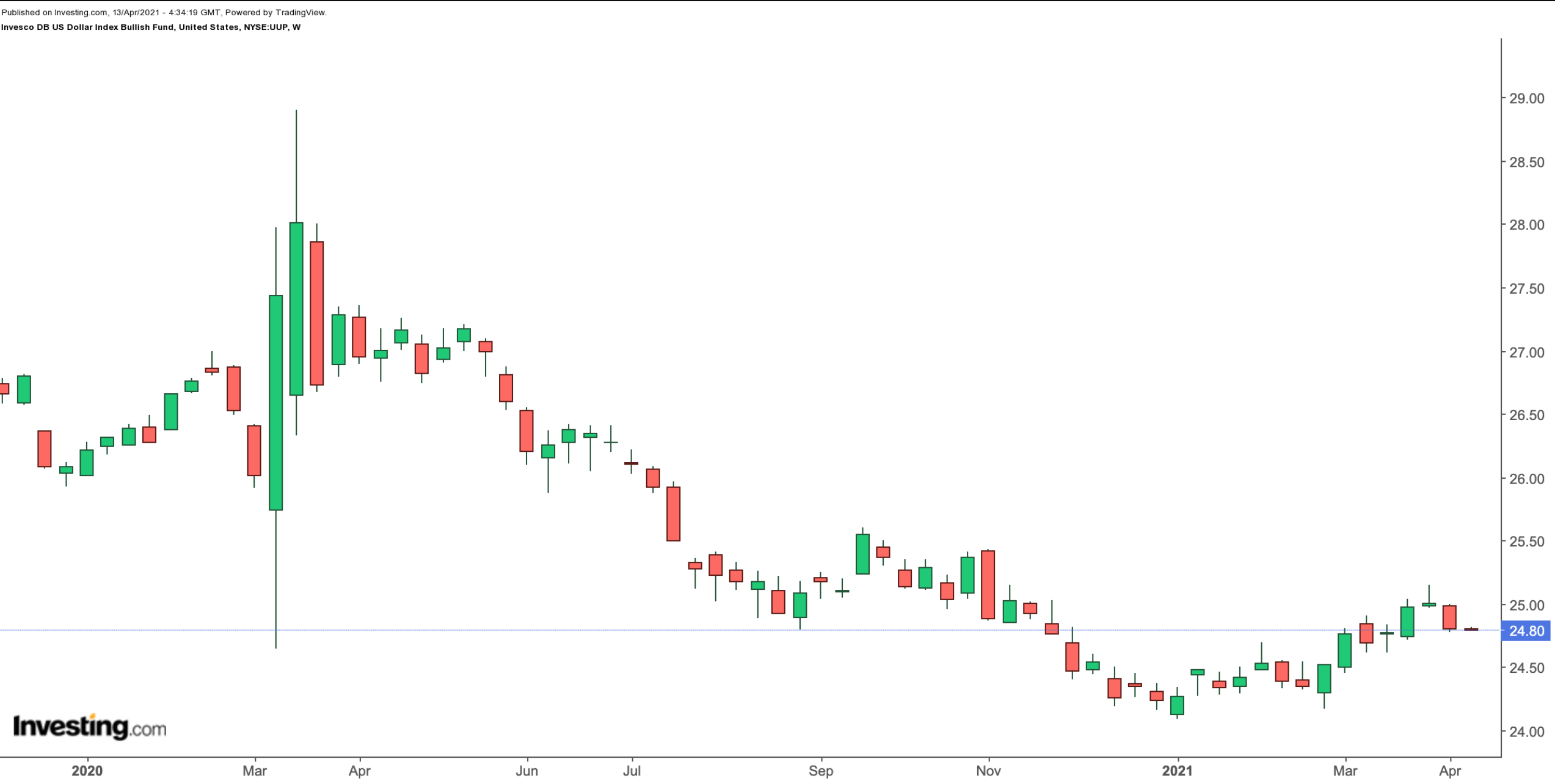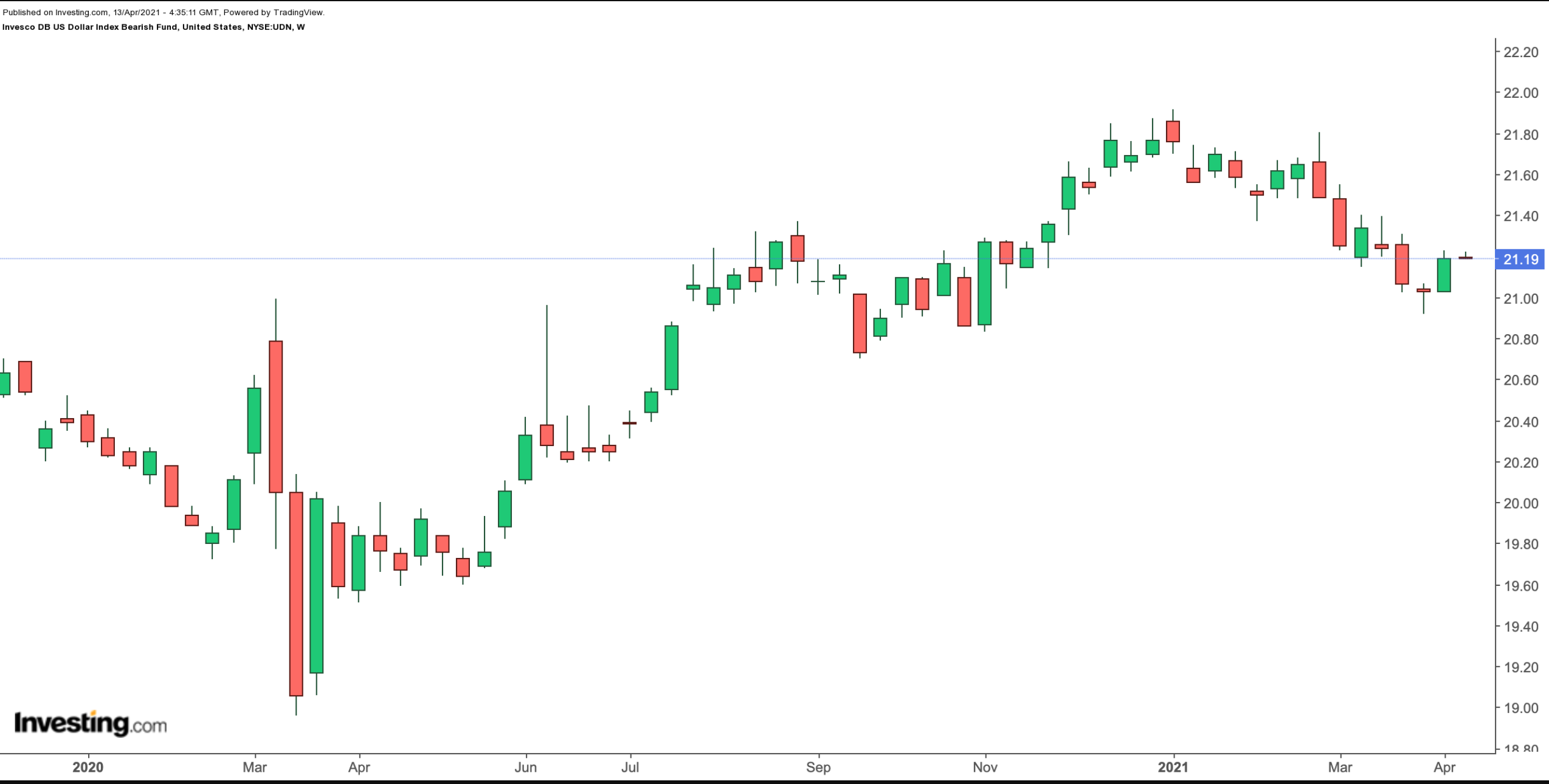Over the past year, the US Dollar Index futures, (USDX), which measures the value of the greenback relative to a basket of six currencies from some of the most significant US trading partners, is down about 8%. These currencies on the index are the euro, Japanese yen, British pound, Canadian dollar, Swedish krona and Swiss franc.
A closer look reveals that the euro is overweight in the US Dollar Index, which rises when the dollar strengthens against these currencies, especially the euro. USDX, which is possibly the world's most recognized currency index, was introduced by the Federal Reserve in 1973 with a starting value of 100. It is maintained by ICE Futures of the Intercontinental Exchange.
When traders talk about a rising or falling dollar, they typically refer to the US dollar index. Analysts have been debating whether the Chinese yuan or the Mexican peso should potentially be included in the index, too. For now, however, there are no immediate plans to change the composition of the index.
Investors Pay Attention To The US Dollar
Institutional investors in bond, currency and gold markets as well as equities pay close attention to the index. For instance, historically, a rising dollar is considered bearish for commodities. On the other hand, a weaker USD is generally favorable for emerging market (EM) assets. Global (political) crises typically mean strength for the greenback.
Put another way, the index is regarded as an intermarket tool. However, such relationships do not always hold true fully.
The US dollar tends to have long periods of appreciation and depreciation. Thus, moves in the greenback can become long and over-extended. During most of 2020, the path of least resistance for the dollar index was been lower. Yet, 2021 brought some strength back to the currency as it has returned 2.4% year-to-date (YTD). It is currently over 92. A year ago, it was shy of 100.
Now the Street wonders whether the index could soon move now above the 92.50 area. Such a move could mean a potential re-test of the recent highs seen in March, shy of 93.50. On balance, we expect the US dollar to trade sideways in the coming week and then to rise. We believe Treasury Secretary Janet Yellen is likely to favor a stronger dollar policy. However, not everyone would agree with our bullish view. But such differences of opinion is what makes a market. Also, assets hardly ever move in a straight line.
For most retail investors, it is important to have a diversified long-term portfolio. In other words, if you have a USD denominated portfolio, as most US-based investors would, it could be prudent to have some allocation to other currencies, too. Most financial planners would be able to steer investors in the right direction.
Today’s article introduces two currency exchange-traded funds (CETFs) that could be appropriate for both dollar bulls and bears. As ETFs, they trade like stocks and can easily be held in traditional brokerage accounts.
1. Invesco DB US Dollar Index Bullish Fund
- Current Price: $24.80
- 52-Week Range: $24.09 - $27.26
- Expense Ratio: 0.76% per year
The Invesco DB US Dollar Index Bullish Fund (NYSE:UUP) has exposure to the US Dollar Index futures contracts that trade on the ICE Futures US exchange (USDX® futures contracts). The fund was launched in February 2007 and has about $387 million under management. Being long the UUP means being bullish on the US dollar, especially vis a vis the euro.

Like the index, UUP has declined about 8% over the past year. At the end of 2020, UUP was around $24.2, a level we’ve previously seen in 2018 as well as late 2020. For now, UUP is likely to have found support around these levels. Yet, for any up-move to become a long-term trend, UUP would need to go and stay over $25.5. Those investors who are bullish on the dollar could consider investing around the current levels.
2. Invesco DB US Dollar Index Bearish Fund
- Current Price: $21.19
- 52-Week Range: $19.59 - $21.91
- Expense Ratio: 0.77% per year
Our second fund, the Invesco DB US Dollar Index Bearish Fund (NYSE:UDN) moves higher when the value of the dollar Index declines. UDN, which is the bearish counterpart of UUP, was also launched in February 2020. It has around $81 million in assets under management.

There could be several ways UDN could find a place in a portfolio. For example, traders who are bearish on the US dollar against the euro could go long UDN.
Other market participants could see UDN as a proxy for broader US indices. In simple terms, a weak USD typically means higher prices for broader US markets.
Thus, those who are bullish on US stocks might potentially be expecting the greenback to depreciate and lose value. Therefore, they could go long UDN.
For speculators who want to take a position on interest rate moves, UDN could be another option. All else being equal, when interest rates in a country go down, the value of its currency also declines. So UDN could be combined with other ETFs suitable for a low interest-rate environment.
Investors who want to hedge their commodity holdings may also utilize UDN, with the general understanding that the greenback and most commodities are inversely related.
